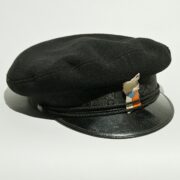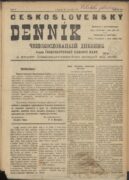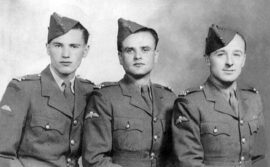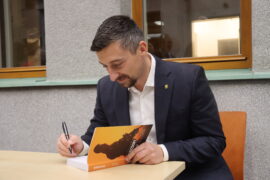
07 Patriotic Cap “Masarycka“
Fotogalerie

The symbol of the Czechoslovak legions in Russia in the interwar was a peaked cap with a diagonally placed white and red ribbon. Together with the fur papakha hat, it was the most frequently depicted attribute of Russian legionaries in art, film and theatre. It also became a typical accessory of the legendary legionary general and later leader of the interwar Czechoslovak fascists, Radola Gajda. Peaked caps could be purchased from specialized companies (Hojtas, Kucera, Bartunek, etc.) and from small, private tailors. Even the most frequently worn headwear of the first Czechoslovak president was based on the Russian peaked cap in shape and form, while President Edvard Benes, considered by many former legionaries to be one of them, had his own cap based on the 1919 pattern.
After the occupation of Bohemia and Moravia in March 1939, the German authorities forbade the wearing of Russian and Masaryk caps in connection with 28 October and the anniversary of T. G. Masaryk. Their mass wearing, especially on 28 October 1939, became a symbol of silent disapproval of the occupation.
The owner of the cap was Felix Perka (1924-2005), during the occupation a member of the scout resistance organisation Zpravodajska brigada, a participant in the anti-communist resistance and a political prisoner.
Aktuálně

Československý deník sehrál v životě legionářů v Rusku velmi důležitou roli. Poprvé vyšel v prosinci 1917

Děkujeme za podporu pro válečné veterány. Sbírka DiGiMÁK vynesla 450 tisíc korun

Tak trochu zamrzlé spojení

Válečný veterán Petr Matouš pokřtil v Armádním muzeu Žižkov svou knihu. Patronkou je i ministryně obrany Jana Černochová








